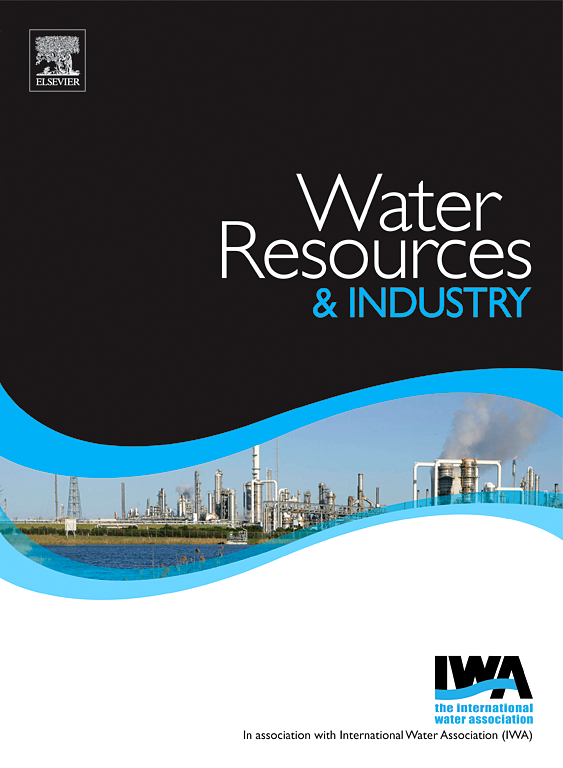Hybrid MOF+COF modified PVDF membranes for enhanced microfiltration of pharmaceutical contaminants
IF 7.5
3区 工程技术
Q1 WATER RESOURCES
引用次数: 0
Abstract
One of the key directions in membrane process development is the exploration of novel materials and the modification of commonly used ones. Designing membrane structures with programmable properties enhances process efficiency and broadens application potential. This study employed hybrid MOF + COF (metal-organic framework + covalent organic framework) structures to modify polyvinylidene fluoride (PVDF) microfiltration membranes. These compounds possess a highly developed structure and large specific surface area, contributing to excellent adsorption capabilities. Such modifications can improve the removal of organic contaminants, including pharmaceuticals and personal care products, during microfiltration.
The aim of this study was to evaluate the impact of MOF + COF modification on the surface and performance characteristics of PVDF membranes and to assess their potential for pharmaceutical removal from water. An in-house synthesized ZIF-8+TpPa structure was used for membrane modification. Tetracycline was selected as a model pharmaceutical. Surface and structural properties were analyzed using FTIR, XRD and contact angle measurements. Filtration performance was evaluated in a conventional microfiltration setup under varying operational conditions: feed temperatures of 25 °C, 30 °C, and 40 °C, and pressures of 0.5, 1, and 1.5 bar.
Structural analysis confirmed the successful synthesis and incorporation of MOF + COF structures onto the membrane surface. Cross-flow filtration showed that tetracycline removal increased from 742.9 mg/m2 (unmodified) to 1222.4 mg/m2 (modified membranes). Higher feed pressure improved removal efficiency. However, the temperature effect was non-monotonic, with a decline in efficiency observed at 40 °C compared to 25 °C and 30 °C.
复合MOF+COF改性PVDF膜增强药物污染物微滤
新材料的开发和常用材料的改性是膜工艺发展的关键方向之一。设计具有可编程特性的膜结构提高了工艺效率,拓宽了应用潜力。本研究采用MOF + COF(金属有机骨架+共价有机骨架)杂化结构对聚偏氟乙烯(PVDF)微滤膜进行改性。这些化合物具有高度发达的结构和较大的比表面积,具有优异的吸附能力。在微过滤过程中,这种改性可以改善有机污染物的去除,包括药品和个人护理产品。本研究的目的是评估MOF + COF改性对PVDF膜表面和性能特性的影响,并评估其从水中去除药物的潜力。采用内部合成的ZIF-8+TpPa结构进行膜修饰。选择四环素作为模型药物。采用红外光谱(FTIR)、x射线衍射(XRD)和接触角测量等方法分析了材料的表面和结构性能。在不同的操作条件下,在常规微滤装置中评估过滤性能:进料温度为25°C, 30°C和40°C,压力为0.5,1和1.5 bar。结构分析证实了MOF + COF结构的成功合成和在膜表面的结合。交叉流过滤显示,四环素去除率从742.9 mg/m2(未改性)提高到1222.4 mg/m2(改性膜)。更高的进料压力提高了去除效率。然而,温度效应是非单调的,与25°C和30°C相比,在40°C下观察到效率下降。
本文章由计算机程序翻译,如有差异,请以英文原文为准。
求助全文
约1分钟内获得全文
求助全文
来源期刊

Water Resources and Industry
Social Sciences-Geography, Planning and Development
CiteScore
8.10
自引率
5.90%
发文量
23
审稿时长
75 days
期刊介绍:
Water Resources and Industry moves research to innovation by focusing on the role industry plays in the exploitation, management and treatment of water resources. Different industries use radically different water resources in their production processes, while they produce, treat and dispose a wide variety of wastewater qualities. Depending on the geographical location of the facilities, the impact on the local resources will vary, pre-empting the applicability of one single approach. The aims and scope of the journal include: -Industrial water footprint assessment - an evaluation of tools and methodologies -What constitutes good corporate governance and policy and how to evaluate water-related risk -What constitutes good stakeholder collaboration and engagement -New technologies enabling companies to better manage water resources -Integration of water and energy and of water treatment and production processes in industry
 求助内容:
求助内容: 应助结果提醒方式:
应助结果提醒方式:


